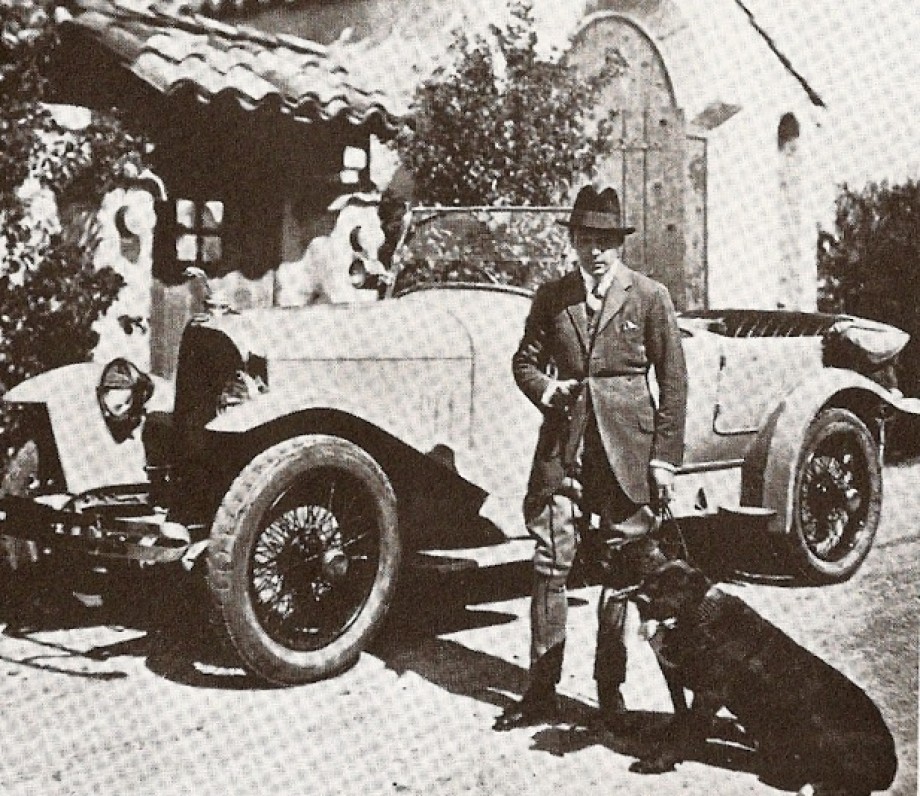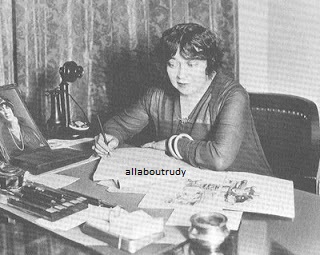Posts Tagged With: June Mathis
26 May 1929 – Mystics Rule Hollywood

The lines are forming at the right before the séance chambers of Hollywood soothsayers. Hollywood elite do not advertise going to the occult in order to see what the fates have in store. Norma Talmadge introduced noted psychic Dareos to the film colony. foretold of Chaplin’s numerous marital troubles and promised Mae Murray she would have a baby by husband noted fake Prince M’Divani. Soothsaying has always thrived in Hollywood and now its faring better than ever before. Dareos makes such a good living that he is now both well fed and well-dressed living in a large home in Ocean Park. Some players will not sign new movie contracts without consulting their favourite palmist, card reader or spirit guide. Astute producers will not begin new pictures unless their trusted astrologist tells them when the stars are favorably disposed. From ping-pong to mysterious seances, crystal gazing, numerology, phrenology and palmistry, the film colony goes into its anxious attempts to peer into the uncertain tomorrow. Louise Fazenda introduced numerology as a fad and for several years was all the rage. Phrenology was a favourite of Wally Reid, Eugene O’Brien, and Tom Mix and seances had its time. The beautiful Laurel Canyon home of the late Rudolph Valentino was a setting for many a search into the hereafter. June Mathis and her mother, Rudolph Valentino, Natacha Rambova all devoutly believed in their seances. They usually met alone since communicating with the other world was not just a passing fancy with them as it was with the rest of Hollywood. Indeed, since Valentino’s death Natacha often declares to the news reporters she is in close touch with Rudy in the spiritual realm. The Ouija Board came to town and many movie people sat for hours over it. However, movie stars that seek advice from these so-called mystics, soothsayers, or psychics who may or not be correct. On the other side of the coin, these psychics are living just as good as the people who pay them.
23 Aug 2022 – 95 Years of Remembering Rudolph Valentino
What a day to remember a wonderful silent film actor we still recall with love and reverence Rudolph Valentino. I virtually attended the Annual Memorial Service, Hollywood Forever Cemetery, L.A. a time of watching with awe and respect of those that came together to watch and listen to the speakers who had a personal connection to Valentino, musicians, watch moving tributes and soak up an atmosphere of love. Time goes by quickly and it was time to see friends and familiar faces until next year. I wanted to continue with remembering and watched a 1975 fictional movie titled “The Legend of Valentino” on Amazon Prime. This was an excellent tribute centered around June Mathis who was responsible for Rudy’s career. While the viewer must use their imagination watching it does provide something different and I recommend it you have some time check it out and hope you enjoy. I finished my evening, of thinking about how many years later, many fans still find time to remember a wonderful actor. It’s been my honor to have met some absolutely wonderful and kind people who are genuine in their admiration. Years will go and life will evolve with fans coming and going. But never forget that Valentino was someone who wanted what we all do a world of kindness with respect for others.
1922 – Studio Backlot Gossip
The Young Rajah,” Rodolph Valentino’s new Paramount picture which Philip E. Rosen is directing, has many fascinating situations and gives the athletic star a chance to show his metal. Wanda Hawley is the pretty leading woman and her co-star Rudolph Valentino is spending all his spare time lately with boxing gloves, fencing foils and a medicine ball—that is, whenever he isn’t riding horseback.
Mr. Rodolph Valentino is back at work on “The Young Rajah,” with Philip Rosen at the megaphone. The adaptation is by June Mathis. The story starts with a mysterious scene and works up to a dramatic climax which it would be hard to excel.
Baron James H. deRothschild, eldest son of the famous French family of financiers, was a guest at our West Coast Studio recently and under the escort of General Manager Victor H. Clarke, Paul Iribe, Fred Kley, Rodolph Valentino, and Adam Hull Shirk, inspected with keen insight and a ready comprehension the intricate W’orkings of the big plant where our pictures are made.
Sensational to the limit are said to be the scenes which Mr. Valentino does sword and cape play before the real fighting bulls. He was trained for the dangerous business by Rafael Palomar, famous Spanish matador, and became highly proficient in the art.
Rodolph goes to San Francisco May 5th to appear at the mammoth benefit to be given by the Mayor’s Citizen Committee to raise funds to help entertain the disabled veterans at the Convention June 26-30 of the Disabled American Veterans of the first World War. Silent Film Star Rodolph Valentino will be escorted by a squadron of cavalry and prominent officials to the hotel and will be royally welcomed.
When Valentino and Naldi were working before the camera, the entire personnel unconsciously drew around them and watched with awe the wonderful acting of this pair. Can you see Mr. Valentino doing a Spanish dance with Nita Naldi, and Lila Lee playing the beautiful Spanish wife? This production was directed by Fred Nihlo, the one and same man who directed “The Three Musketeers”-—that alone should be enough for any exhibitor to know, that together with this marvelous story, under the guiding hand of this capable director and with Rodolph, Nita Naldi and Lila Lee, it will do a record-breaking business at his box-office.
Dec 1924 – June Mathis & Silvano Balboni Marriage

December bride June Mathis, screen writer and Silvano Balboni cinematographer were married at the Mission of St. Cecilia, Riverside, California.
 Their whirlwind romance is an outstanding example of how two professionals seemed destined to meet and have their own happily ever after. It started out as mutual admiration between the couple. Silvano amazed at the personality of Miss Mathis and June was attracted to his dynamic looks. Now they are looking forward to collaborating on future movie projects.
Their whirlwind romance is an outstanding example of how two professionals seemed destined to meet and have their own happily ever after. It started out as mutual admiration between the couple. Silvano amazed at the personality of Miss Mathis and June was attracted to his dynamic looks. Now they are looking forward to collaborating on future movie projects.
This happily married couple were married until June’s early demise in 1927. Their last movie collaboration was “The Masked Woman”. For this project, June Mathis wrote and directed, and her husband had to come in and finish what his wife started.

This article is about Metro Studios where Rudolph Valentino worked on several of his most notable movies. June Mathis was the head writer at Metro.
3 Aug 1924 – Rumors
All the worlds in Europe this summer. From Paris or London, Rome or Germany with its alluring shops are getting a good dose of filmland. June Mathis, Carmel Myers, and George Walsh are at the Claridge and when they gaily telephoned me the other day. Telephone service like people is the same everywhere only I do think after this trip I shall feel inclined to apologize to the Los Angeles phones. I used to think it was the worst in the world, but I have met London and Paris since then. The only redeeming feature is in Paris it is only one arm that goes to sleep while you are waiting for the operator to wake up. The mouthpiece and receiver are like a one-piece bathing suit all together. So, lunch at the Ritz Hotel with June Mathis after which we watched mannikins parade in several shops just to get a slant at the new styles. When June passed up the filmy frocks which are no doubt putting the eyes out in Deauville now, and insisted that she is being a hard-working woman must have more practical attire, the inquisitive French girl, observant too interrupted with, “Ah Madame cannot be a regular working woman. She has such lovely jewels”. She no doubt had her eye on the lovely necklace watch June gave herself in Hollywood last Christmas. I wanted to know whether the report from Hollywood that June Mathis married here to George Walsh was true. Miss Mathis declared she was neither married nor engaged to George Walsh and that is that. So, let the rumor mill find something else to gossip about. From my observation since June is in Paris, I would say George Walsh and other Americans who maybe interested in the talented lady there is a keen rival for her affections, and he is Italian and happens to be in the movie industry. June met her new man in Rome, and he appears quite attentive. Do I hear wedding bells in their future? Time will only tell.
18 Apr 1921 – Triple Named Parrot Escapes From Film Studio
18 Feb 1919 – Here’s a Lesson for All Budding Scenario Writers
25 Jan 1922 – Hollywood Invites Sarah Earnhardt to 10th Anniversary
23 Dec 1924 – Natacha sends June on her way
Hollywood tongues have been wagging over the newest sensation of studio circles. What will be the result of the ruption between Mrs. Valentino and June Mathis? For the time being “Rudy” has bowed to his imperious wife and let his ablest friend and sponsor go her way. It was Miss Mathis who started Valentino on the road to opulence and fame. She picked him for the lead for “The Four Horsemen” she saw an opportunity and it paid off in a big way. Mrs. Valentino who wrote “The Scarlet Power” saw what changes Miss Mathis had made in it, the grand smashup came. So “Cobra” was substituted and all the grand vestments and shining armour for the Rambova story were packed away. Cost of the switch runs into the hundres of thousands, but the wife, who in other matters also laid down the law, is triumphant. No one concerned will talk, but Valentino retains his admiration for Miss Mathis. But only from a safe distance.













You must be logged in to post a comment.